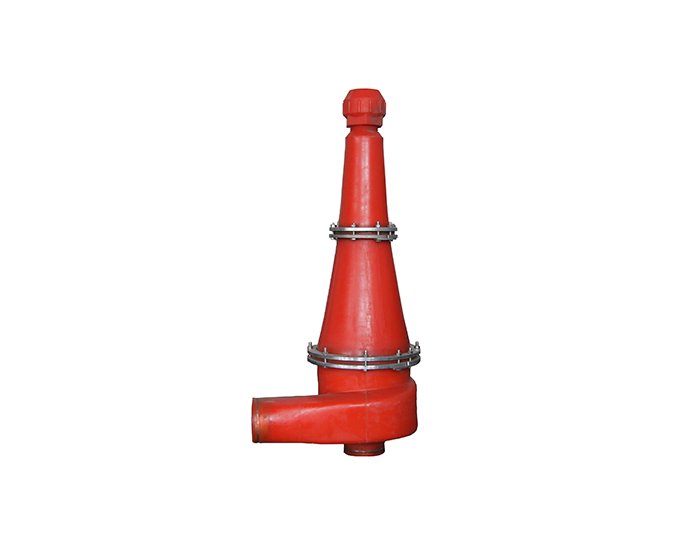Understanding Cone Hydrocyclones A Comprehensive Overview
Cone hydrocyclones are innovative devices used in various industrial processes for separating materials based on their size and density. Their unique design and operational efficiencies make them a popular choice in applications such as mineral processing, wastewater treatment, and even in the pneumatic transport of granular materials. This article delves into the working principles, applications, advantages, and considerations when utilizing cone hydrocyclones.
Working Principle
The primary function of a cone hydrocyclone is to utilize centrifugal force to separate particles suspended in a liquid. The device is typically conical in shape, which enhances the separation process by increasing the velocity of the fluid as it moves through the cone. The mixture enters the hydrocyclone tangentially, which forces the liquid and suspended solids to spiral downwards. The denser particles, due to their weight, are subjected to greater centrifugal force, causing them to move towards the wall of the cone and ultimately settle at the bottom. This process allows for the efficient separation of finer particles from the coarser ones.
The hydrocyclone also features an overflow outlet at the top, which allows the finer, lighter particles and the liquid to exit the system. The combination of these two outlets enables the hydrocyclone to achieve a high level of separation efficiency.
Applications
Cone hydrocyclones are employed across multiple sectors due to their versatility. In the mineral processing industry, they are extensively used for separating valuable minerals from gangue, thus helping in ore concentration. Similarly, in the oil and gas industry, hydrocyclones play a critical role in removing water and solids from crude oil, improving the quality of the final product.
In wastewater treatment processes, cone hydrocyclones are beneficial for separating solids from liquids, facilitating the recycling of water and reducing environmental pollution. Moreover, they are utilized in the food processing industry for clarifying juices and separating pulp, showcasing their adaptability to various materials and industries.
cone hydrocyclone
Advantages
The advantages of cone hydrocyclones are numerous. Firstly, they offer a high throughput capacity with relatively low energy consumption, making them operationally efficient. Their compact design allows for space-saving installations, while their relatively simple construction reduces maintenance costs.
Another significant benefit is the ability to handle large flows of material without clogging, which is a common issue in other separation systems. This operational reliability is crucial in industrial processes where downtime can lead to considerable financial losses. Additionally, cone hydrocyclones can achieve high levels of separation efficiency, thus ensuring product quality.
Considerations
Despite their numerous advantages, there are certain considerations to keep in mind when operating cone hydrocyclones. The design parameters, such as cone angle, inlet pressure, and flow rate, play a vital role in performance optimization. Each application may require specific adjustments to these parameters to ensure effective separation.
It is also important to monitor and maintain operational conditions to prevent issues such as wear and tear, particularly in applications involving abrasive materials. Regular inspections and maintenance are essential to sustain efficiency and prolong the lifespan of the hydrocyclone.
Conclusion
In summary, cone hydrocyclones stand out as effective and efficient tools for particle separation in various industrial applications. Their unique design, combined with operational advantages, makes them an asset in processes ranging from mineral processing to wastewater treatment. By understanding their working principles, advantages, and operational considerations, industries can harness the potential of cone hydrocyclones to enhance productivity, reduce costs, and improve product quality. As technology advances, we can expect further innovations in hydrocyclone design and application, solidifying their role in the future of industrial processing.
 Linear Motion Shale Shaker In Drilling Rig
Linear Motion Shale Shaker In Drilling Rig  Oilfield Mud Cleaner
Oilfield Mud Cleaner  Drilling Fluid Decanter Centrifuge
Drilling Fluid Decanter Centrifuge  Drilling Mud Desander
Drilling Mud Desander  Hydrocyclone Desilter
Hydrocyclone Desilter  Centrifugal Pump/Centrifugal Mud Pump
Centrifugal Pump/Centrifugal Mud Pump  Shear Pump
Shear Pump  Jet Mud Mixer
Jet Mud Mixer  Horizontal Mud Agitator
Horizontal Mud Agitator  Constant Pressure Drilling Fluid Mud Gas Separator
Constant Pressure Drilling Fluid Mud Gas Separator  Mud Gun
Mud Gun  Mud Tank
Mud Tank  Solids Control System Vacuum Degasser
Solids Control System Vacuum Degasser  Flare Ignition Device
Flare Ignition Device  Diesel Tank
Diesel Tank  Submersible Slurry Pump
Submersible Slurry Pump 





































